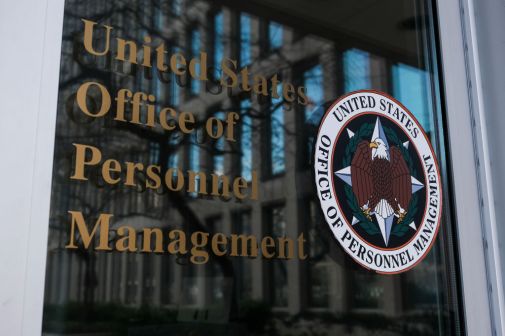Federal CIO Tony Scott outlines his digital priorities
In his first public speech since becoming Federal Chief Information Officer, Tony Scott outlined his vision for delivering world-class digital services for government, stressing the importance of bringing IT projects to fruition, attracting great talent, and focusing on cybersecurity.
Tony Scott speaking publicly for the first time as federal CIO, at AFCEA Bethesda forum March 24. (FedScoop/Wyatt Kash)
“One of the biggest priorities for me is landing the plane,” said Scott. “I’m a pilot. One of the main things I learned is you can teach someone to take off pretty quickly. But landing a plane successfully…takes a lot of hard work. It’s a perfect analogy for my experience in IT,” said Scott, who served as CIO at Walt Disney, Microsoft and VMWare before his
Feb. 5 appointment to pilot the federal government’s IT priorities.
Speaking this morning at an industry breakfast sponsored by the Bethesda chapter of the Armed Forces Communications and Electronics Association, Scott stressed the importance he planned to place on driving value, and seeing technology investments transform government services, not merely modernize the systems behind them. (He elaborated further in an interview with FedScoop later in the morning at the Data Transparency Coalition’s Financial Regulation Summit.)
“Driving value is also about driving efficiency. There are a number of ways to do that: adoption of agile technologies, creating the right kinds of dashboards that will help us understand whether we’re making progress or not,” he said.
“But one of the things I’ve learned as CIO at Disney and Microsoft (and as CTO at General Motors) is that giving CIOs a dollar target is often the wrong thing to do.” It leads CIOs to “figure out how to cut costs in the short run, but perhaps not drive sustainable value in the long run. What will happen in many cases is we’ll just stop… investing in the new technologies we need to really make the difference.”
Scott said his preferred approach is “getting goals that ensure we’re investing in the right set of things” rather than “playing catch-up when we inevitably find ourselves behind the 8-ball.”
Scott outlined his top three priorities in the year ahead, which build on the work of his predecessor Steven VanRoekel, who
stepped down last fall.
The first revolves around improving the value of the government’s IT investments.That is “both the story of investing in the right things and also making sure we get rid of the things that we no longer need.”
Second is delivering world-class citizen services, he said. He will continue efforts to create a “rich feedback environment” that focuses on the customer’s experience, ensuring citizens get “what you need, when you need it, where you need it, how you need in a way that’s most effective. ” While the government has made a lot of progress, he said there is still a long journey ahead.
And third, and what he called the “mission of our time,” is “protecting federal assets and information – that includes citizens’ information. This is a job that will never be finished.” He noted that the demand for information security specialists “is off the charts,” based on his experience recruiting talent in the private sector. “There’s lots of room for innovation in the federal security space,” he said.
Underpinning these priorities is “having great people and great leadership in our various organizations,” he said. “My experience in industry is that the journey is full of fits and starts, successes and some failures. Getting the right type of talent in the federal government,” he said, is one of his top missions.
He also said he will focus on “project management and delivering faster, with better results, and using methodologies for developing software, and systems and experiences that are much different than the traditional ways that we engaged in that in prior years.”






